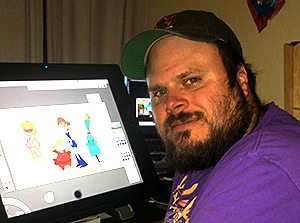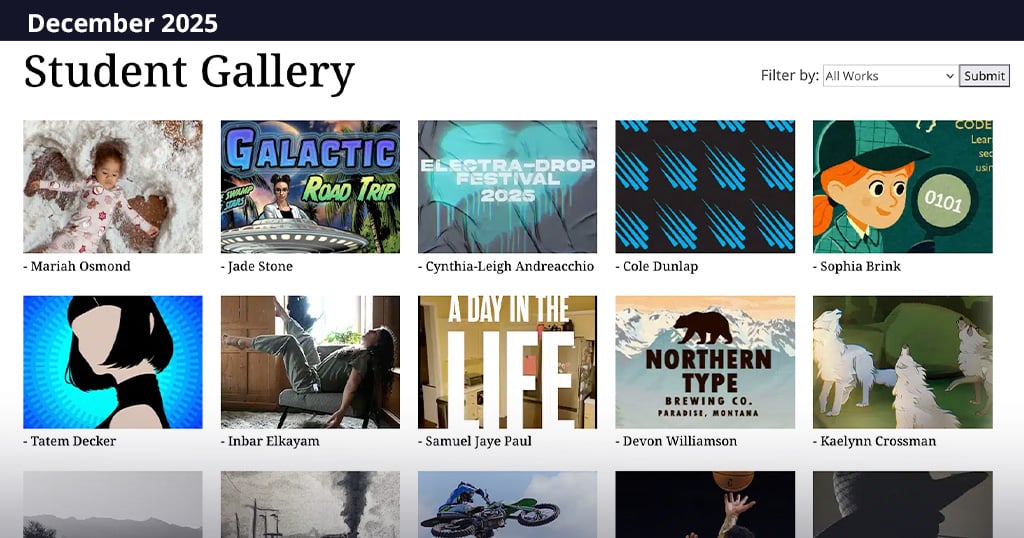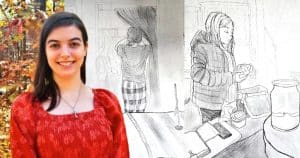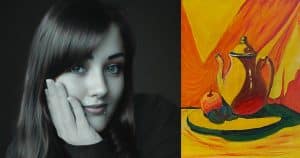Teaching Cartoonists to Draw, Draw, and Draw Some More

Q: What first attracted you to creating cartoon art? How did you get your first breaks in the field?
I grew up reading my Dad’s old comic book collection of Scrooge McDuck comics by the great Carl Barks. I loved the energy and epic-ness of those stories. I also enjoy making people laugh, and what better way than through a funny cartoon? I got my first break drawing cartoons professionally drawing caricatures at Seaworld in San Diego. I think that’s where I really feel in love with cartoon art.
Q: Which artists were your major influences, and why?
It’s hard to pin down influences since I’ve gone through so many. I know Bill Waterson and Carl Barks definitely influenced me because I grew up loving and reading their work. Lately I have been enjoying the work of Bill Wray, one of the cartoonists who worked on Ren and Stimpy and who has designed on several TV shows and recently (as I type this) did design work for Storycorps and their shorts. I enjoy Bill’s simplified yet exaggerated sketches of ordinary people. He has a great ability to capture energy and emotion with just a few lines.
Q: Can you talk about your Webcomic project, how it got started and what its goals are?
Currently, I’m making a webcomic with my wife. She writes it and I draw it. It’s more or less a fun outlet for jokes we come up with and a fun side project to stay in practice and get some jokes out there.

We’re on an unofficial hiatus but we have about a year’s worth of strips up so there’s some fun stuff up there to get people laughing while we put together some new work.
Q: In your course, you talk about how a skilled artist can tell an entire story in a single frame. How do cartooning artists begin to develop their storytelling skills?
I think cartooning lends itself to storytelling very well. With a cartoon, it’s a simplified version of reality. Every line can mean something and I think when you start to analyze your drawings like that, it’s not hard to expand that way of thinking to a story or a story told through images. Every element on the page or the screen is there for a reason.

Q: What other professionals do cartoon artists need to be able to work with and why?
In the newspaper days, you used to have an editor to work with. If you worked in TV cartoons, you would have a whole team, and the same with feature animation. That’s still true today, though with webcomics and the Internet you can be more independent with your vision. But I think being able to work with others is still an important skill to have. Also there are new roles. If you work in games or online you might have to deal with coders and developers who have their own way of looking at things and practically their own language.
Q: What kinds of subjects should an aspiring cartoonist study at school? What should they be doing outside of school?
Draw, draw, draw and draw some more. I think the best thing you can do is draw till you don’t think about the act of it. That’s when you start to really make work that shines. But also remember why you’re doing it, keep it fun for yourself. Don’t burn yourself out by turning your passion into something you have to force yourself to do.
Q: The Internet seems to have created more opportunities than ever for illustrators and animators, with the emergence of blogs, casual games, and self publishing. What new opportunities are out there for cartoonists?
Games, webcomics, YouTube/web series. Yes, there’s a big need for content out there and lots of ways to actually making a living doing it. I graduated school in ’05 and the jobs I’ve worked at I didn’t even conceive of existing when I got out of school. It’s a good plan to stay adaptable and always keep learning. Teaching this online Cartooning class at Sessions College is a big project for me, and I’m looking forward to seeing how it goes.
Q: Cartooning is fun because:
Whatever I drew that I thought was funny, I can probably draw it funnier.
For more information about the Cartooning and Sequential Art course, visit our degree and certificate programs in Illustration. For information on Sessions Faculty member Bill Drastal, visit his faculty page or his portfolio site billdrastal.com.

Gordon Drummond is the President of a Sessions College. He's passionate about education, technology, and the arts, and likes to surround himself with talented people. Read more articles by Gordon.
RECENTLY ON CAMPUS





